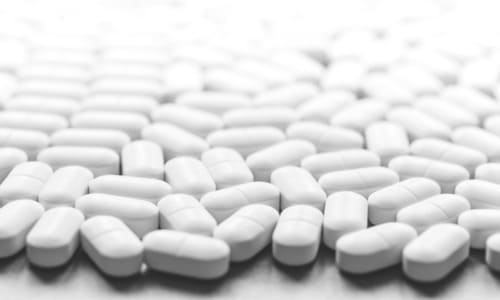California Dangerous Drugs Accident Lawyer
 Defective drug injuries can inflict serious medical harm, sometimes leading to death or lifelong disability. Patients may develop new conditions or see their pre-existing diagnoses worsen. Worst of all, affected patients and their families are often on the hook for the costs of the resulting treatment. Drug companies and others who hold pharmaceutical liability notoriously deny patient claims, downplay risk, and seek to avoid paying reasonable compensation for patients’ damages.
Defective drug injuries can inflict serious medical harm, sometimes leading to death or lifelong disability. Patients may develop new conditions or see their pre-existing diagnoses worsen. Worst of all, affected patients and their families are often on the hook for the costs of the resulting treatment. Drug companies and others who hold pharmaceutical liability notoriously deny patient claims, downplay risk, and seek to avoid paying reasonable compensation for patients’ damages.
The California defective drug liability attorneys at Singh Ahluwalia Attorneys at Law are willing to fight for your rights to seek repayment of all your damages. When you have been hurt by a dangerous drug, don’t expect the drug manufacturer or other responsible party to assume liability willingly. Let us represent you, and we promise that we will stand up against big corporate interests and maximize your chances of recovering damages in full.
Learn more about your legal options and how cases like yours are commonly handled during your free, confidential, no-obligation case review. Schedule your complimentary case evaluation now when you Call (559) 878-4958 or Contact us online .
Hold Pharmaceutical Companies Accountable With a California Dangerous Drugs Accident Attorney
Because they earn such high profits, pharmaceutical companies have deep pockets to defend against liability. They hire some of the most powerful law firms in the country to represent them in dangerous drug cases. This heavy-handed response stems from a desire to avoid paying out anything for the harm their products cause, for fear of “opening the floodgates” to other lawsuits and further legal action.
Attorney teams representing big drug interests often seek to make injured parties feel as if they are owed nothing — or, in the worst cases, that their injuries were their own fault somehow. They may offer a paltry settlement, or deny any liability whatsoever. In extreme situations, they may threaten retaliatory legal action, seeking to deter anyone who might wish to recover their damages following an adverse event.
Singh Ahluwalia Attorneys at Law can provide you with a dangerous drug lawyer in California to represent you on your case and go toe-to-toe with the legal opposition. We ensure you are not taken advantage of during the claims process and that you are fully aware of your legal rights. When you feel as if no one else is there at your side, you can look to the services of our compassionate and highly motivated attorneys. We will aggressively seek all compensation to which you may be entitled, and we will help you separate fact from fiction when it comes to the legal strategies available.
Drug companies are fully prepared for any claims of harm coming their way. They train entire departments on how to handle these cases. You deserve someone with the same level of focus and preparation at your back. Reach out to our California drug liability lawyers to fully assess your damages, manage your case from start to finish, and give you every chance possible at recovering the compensation you need.
Type of Damages Available in a Drug Injury Case
In cases where a defective drug led to an injury, a California drug injury lawyer can help you seek to recover all losses. That includes the costs of medical care made necessary by the adverse event, as well as any treatments required because the adverse event made a pre-existing condition worse. In addition, a drug injury claim could provide compensation to replace the wages you lost while hurt, including any projected future loss of income because of prolonged illness or lifelong disability. Finally, an injury claim could recover compensation for the pain and suffering you have experienced, or the loss of time spent with a loved one who passed as a result of their dangerous drug complications.
Adverse Drug Reactions Are the 4th-Leading Cause of Death in the U.S.
Dangerous drugs cause adverse events far more often than many people assume. While the pharmaceutical industry — alongside supporting healthcare providers and pharmacy retailers — wants to diminish the direness of the situation, the truth is that adverse drug reactions (ADRs) lead to over 100,000 deaths, on average, each year. 2019 saw 110,000 ADR-related deaths alone.
Indeed, advances in pharmaceutical medicine propelled huge leaps forward in healthcare at the turn of the 20th century, resolving many of the most-deadly acute illnesses while improving prognoses in patients suffering from injury or other acute conditions. Post World War II, the rapid development of new pharmacological research and development led to a host of new medications capable of improving chronic conditions, lengthening lifespans while improving quality of life for millions.
At the same time, pharmaceutical companies netted billions in profits, turning drug manufacturing into one of the top industries on the planet. The pursuit of profits at the expense of patient safety has led to a medical climate where nearly 2,400 people die from ADRs every week.
Today, nearly half of U.S. residents take prescription drugs regularly or report having taken at least one prescription in the last 30 days. ADRs cause roughly 1.9 million hospitalizations each year, while an estimated 840,000 inpatients encounter an ADR during the course of their hospitalization. That’s 2.74 million people each year impacted by risky drugs with a high potential for harm.
In fact, according to the journal Health Affairs, dangerous drugs present a major and growing risk to public health and safety. They reveal: “This epidemic of harm from medications makes our prescription drugs the fourth-leading cause of death in the United States. Including hospitalizations and deaths from prescribing errors, overdosing, and self-medication, drugs move up to third place.”
Types of Dangerous Drugs
There are all types of drugs that could be considered dangerous because of their noted capacity to inflict serious harm or death. Some of the most relevant drugs involved in past and current litigation include the following:
- Taxotere
- Accutane
- Truvada
- Belviq
- Mylan (nitizadine)
- Zantac (ranitidine)
- Valsartan
- Viagra, Cialis, Adcirca
- Johnson & Johnson baby powder
- Celebrax
- Diovan (valsartan)
- Cozaar (losartan)
- Elmiron
- Uloric
- Xeljanz
- Tasinga
- Risperdal
There are also multiple categories of drugs commonly seen in defective pharmaceutical liability claims, such as:
- Blood thinners
- Diabetes (Type 2) drugs
- Painkillers (opiods)
- Antidepressants
- Antianxiety medications
- Birth control
- Proton Pump Inhibitors (PPI)
Types of Dangerous Drug Defects
A defective or dangerous drug differs from a drug known to have side effects and risks that have been fully disclosed to the medical community. In a case where a physician failed to prevent a drug interaction, for example, by prescribing a combination of medications known to be risky, the physician might be considered negligent and at-fault rather than the drug itself.
However, some drugs pose unacceptable risks compared to their benefits, yet they conceal these risks from the public and medical professionals. Drug companies may also rely on haphazard pharmaceutical manufacturing contractors, or they may fail to warn the public about dangers that would normally be considered acceptable. In such cases, the drug manufacturer or other parties responsible for the defect may be held liable for all resulting damages.
There are three main categories of drug defect:
- Dangerous drugs contain compounds and other molecules that present an unacceptably high risk to patient safety — a quality referred to as a “design defect” in other product categories. These risks may be known to the drug manufacturer, or they may have gone undiscovered because of a lack of adequate testing. In any case, California’s strict liability laws hold drug manufacturers responsible for unacceptably dangerous drugs that are released to the market.
- Manufacturing defects occur as a result of poor manufacturing controls or a lack of safety in the development of the manufacturing process. Drugs rendered dangerous by a manufacturing defect may not affect all products sold. They may also only lead to an unacceptable patient risk in certain contexts. Regardless, drug companies can be held responsible either jointly or separately alongside contract manufacturers that create dangerous drugs.
- Failure to warn cases involve a drug that has what is considered an acceptable level of risk and/or a known side effect, but that nevertheless fails to inform patients or doctors of these risks to the degree required by law.
Who Is At-Fault for a Dangerous Drug Injury?
Many parties may be considered liable after a dangerous drug-related injury.
Drug companies are, in most cases, responsible for the effects of the products they release. This responsibility holds true even when they delegate decision-making authority to a third-party, such as a contract manufacturer or a drug company given permission to sell the drug under a different name.
Drug-testing and development laboratories can be considered liable in cases where they misled the drug company or otherwise failed to exercise the required due diligence, leading to a dangerous defect.
Pill manufacturers, drug distributers, and drug retailers may be held liable in cases where the drug would normally be safe, but a defect arose because of specific failures introduced within the supply chain. Poor manufacturing controls could lead to the introduction of a harmful contaminant, for example, while poor handling and storage of the drug could cause a formulation to change in a way that poses major risks to patient safety.
Prescribing physicians and healthcare providers could be considered at-fault for a dangerous drug event when their own handling of the drug led to a dangerous defect. These cases are distinct from malpractice cases, where a failure to follow a specific standard of healthcare provision led to the patient’s harm.
A pharmacist or pharmacy retailer could be held liable in cases where their handling or dispensing of the drug introduced a harmful defect. Again, these cases are considered distinct from malpractice cases, where the drug itself would be considered safe if not for a failure to follow standards of care.
A single drug injury case could involve multiple claims against multiple parties or name multiple parties within a single claim. The case could also be litigated alongside other claims seeking restitution from parties who committed another harmful act, i.e. malpractice. Pharmaceutical liability cases are frequently complicated because of factors like these, which is why injured claimants stand to benefit from the services, knowledge, and resources offered by an experienced California dangerous drugs accident lawyer.
Does FDA Approval Mean a Drug Is Safe?
One common misconception is that the U.S. Food and Drug Administration independently tests and evaluates pharmaceutical products for safety and efficacy. In truth, the FDA is only there to review safety and efficacy data presented to them by the company seeking approval. In fact, in many cases, this form of review can be made more informal — or skipped entirely — depending on the formulation of the drug and its category.
By itself, this process produces some major flaws. Research from the Yale School of Medicine found that, from 2001 – 2010, almost a third of the drugs approved by the FDA later produced major safety issues year after year once they were released.
However, things grow even more concerning considering allegations that the FDA has an industry-backed motivation to approve drugs more quickly and with less oversight.
One report notes how fees charged by the FDA for submission to their approval process
“turned drug companies into the FDA’s prime clients, deepening the regulatory and cultural capture of the agency.” The report directly connects hastened review timelines with increased hospitalizations and deaths. “Meeting the needs of the drug companies has taken priority over meeting the needs of patients,” the paper adds, concluding that “unless this corruption of regulatory intent is reversed, the situation will continue to deteriorate.”
Drug Recalls Are Often Too Late
Adding to cause for concern surrounding drug safety, the public also tends to misconceive how recalls work. The overwhelming majority of recalls are considered voluntary, as the FDA has limited authority to dictate a mandatory recall — much less enforce it. Further, the FDA is prevented from directly contacting patients who may have been affected by dangerous drugs subject to recall.
Drug recalls fall under one of several categories:
- A market withdrawal is performed when there is little cause for concern regarding patient safety, but a company nevertheless seeks to remove some or all of a product from distribution because of minor issues.
- Class 3 recalls involve reported adverse events that are only likely to affect a small proportion of the prescribed patient population.
- Class 2 recalls involve adverse reactions that are serious but non-fatal and unlikely to result in any permanent impairment. Most drug recalls fall into this category.
- Class 3 recalls are the most serious recalls, involving a high risk of serious harm, which includes a significant risk of permanent damage or death.
Recalls are often delayed, as drug companies will weigh the benefits of reducing their exposure to liability with the estimated costs of the harm the defective drug is expected to cause. Further, drug companies know that recalls generate negative press, and they could be used as evidence that the company is aware of the flaws in their products and their capacity to inflict harm.
Fortunately, a drug company doesn’t have to recall a product for it to be considered defective. Because California allows for claims under the strict liability doctrine of law, all that patients need to prove is that they used the product as intended (or in a manner wholly foreseeable to the manufacturer) and the product itself caused harm.
Work With a California Dangerous Drugs Attorney to Hold Pharmaceutical Companies Accountable
Adverse reactions to drugs can cause major harm, potentially even costing a patient’s life.
The attorneys at Singh Ahluwalia are here and prepared to do whatever it takes to help your case succeed. We will help you start the process of filing an injury claim, and we will protect you from the most egregious tactics wealthy companies wield against the people they hurt.
An attorney is waiting to listen to your story and provide help. Call to schedule your free case review when you Call (559) 878-4958 or Contact us online .


